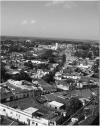Abstract
The man like social entity, maker of his own culture contributes values to the city that recognizes as the cultural biggest fact.This way, the relationship culture - city thinks about in two slopes, from the human factor and from the inherited culture whatis in correspondence with its semantic definition.From the theoretical point of view it is recognized that the understanding of the cultural values can be carried out through thestudy of the history, of the material inherent elements to the tangible inheritance, and mainly of a deep understanding of thespiritual or intangible elements, those that are also part of the immaterial patrimony.The used methodology leaves of considering the study of some premises like the physical means, the population and the historicalspecific mark, as well as of assuming the historical investigation as indispensable to base the processes of cultural significance.They are considered key results being able to demonstrate that in the synthesis process among the elements of the materialand spiritual culture, she left determining the space configuration and the conformation of the image of the symbolic city. Inthis sense the city is characterized by dynamic relationships that give a functional, formal space as a result and of significancethat it responds to a historical concrete situation.Apuntes is registered under a Creative Commons Attribution 4.0 International Public License. Thus, this work may be reproduced, distributed, and publicly shared in digital format, as long as the names of the authors and Pontificia Universidad Javeriana are acknowledged. Others are allowed to quote, adapt, transform, auto-archive, republish, and create based on this material, for any purpose (even commercial ones), provided the authorship is duly acknowledged, a link to the original work is provided, and it is specified if changes have been made. Pontificia Universidad Javeriana does not hold the rights of published works and the authors are solely responsible for the contents of their works; they keep the moral, intellectual, privacy, and publicity rights.
Approving the intervention of the work (review, copy-editing, translation, layout) and the following outreach, are granted through an use license and not through an assignment of rights. This means the journal and Pontificia Universidad Javeriana cannot be held responsible for any ethical malpractice by the authors. As a consequence of the protection granted by the use license, the journal is not required to publish recantations or modify information already published, unless the errata stems from the editorial management process. Publishing contents in this journal does not generate royalties for contributors.


